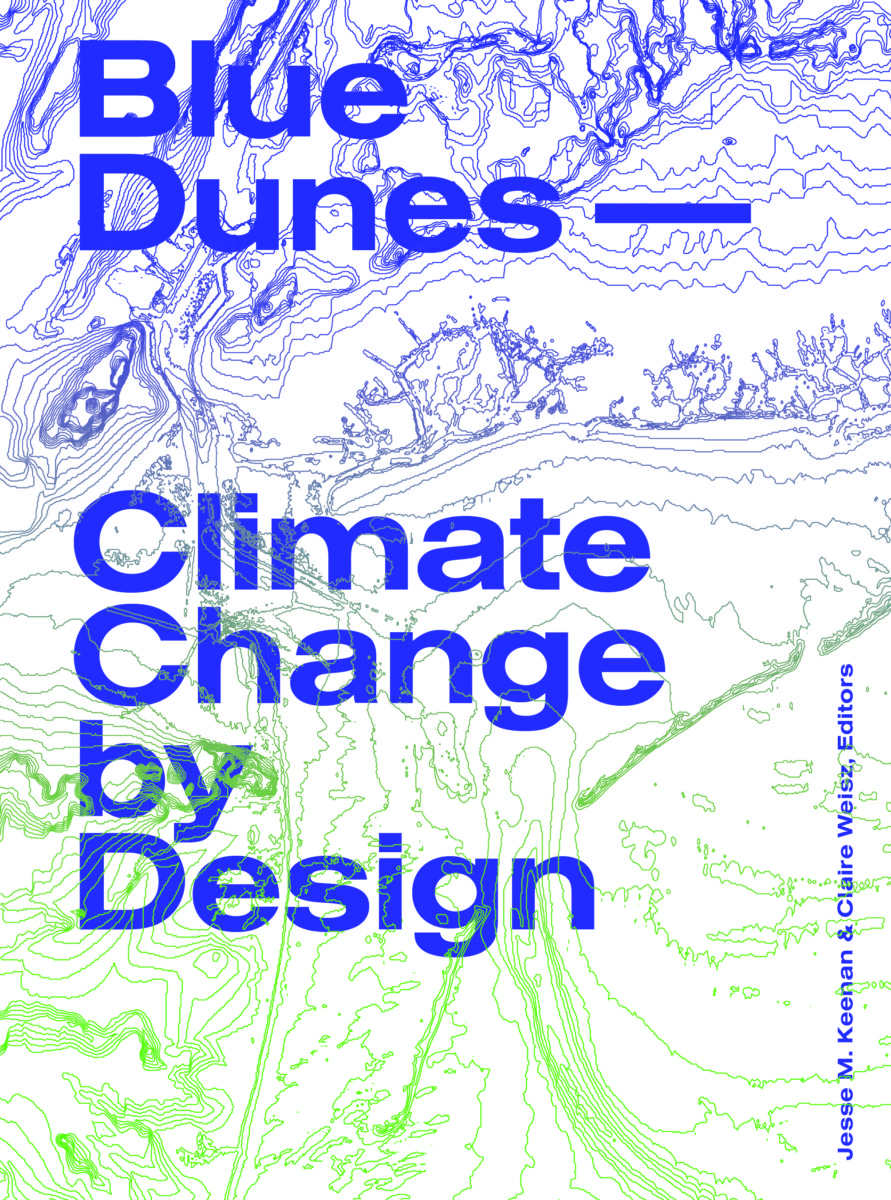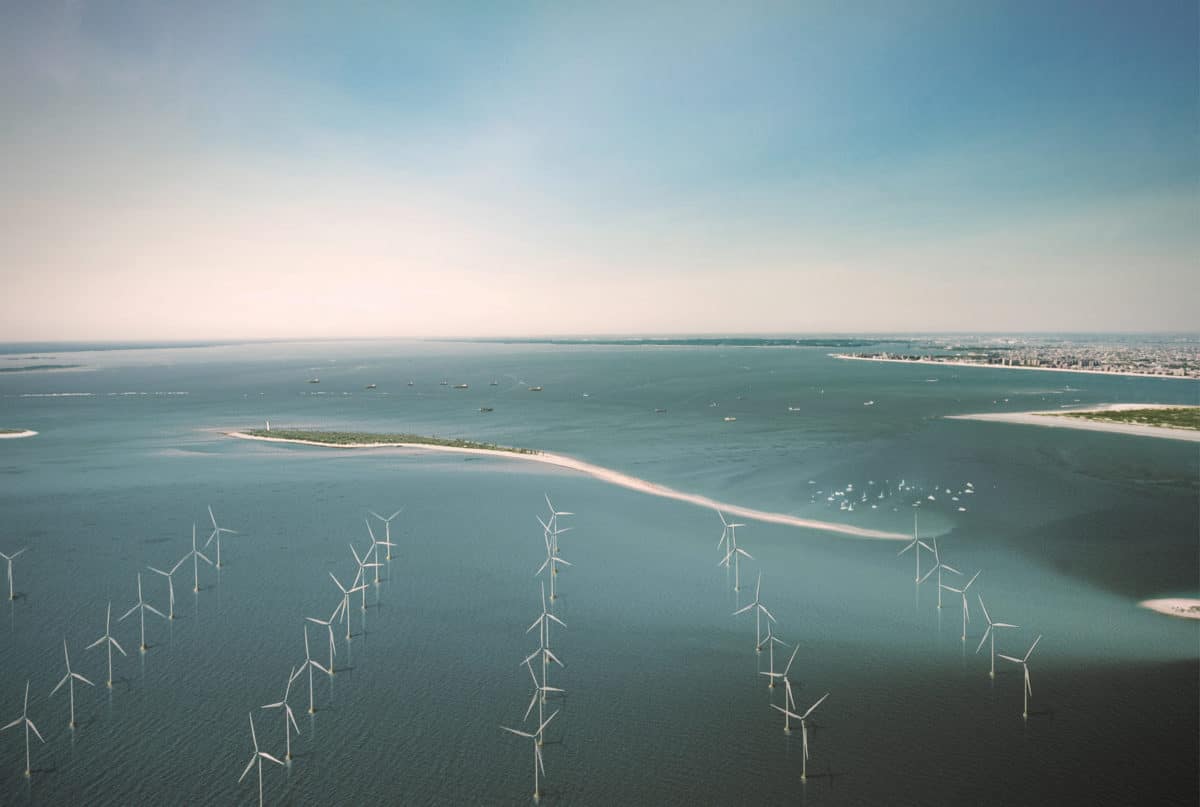In 2013, following Hurricane Sandy, President Barack Obama announced the international design and ideas competition Rebuild by Design, which created a public-private partnership to support research and development of innovative ideas that addressed many of the risks and vulnerabilities highlighted by Sandy and similar climate events.
One of the proposals, the Blue Dunes project led by design firms WXY and West 8, proposed a string of artificial barrier islands off the coasts of New York and New Jersey. The project involved a diverse group of designers, climate scientists, financial advisors, risk managers, and community boards and members. By embracing such a broad coalition, this proposal also suggested a number of important lessons for future efforts to address and mitigate the damage from ever-more-frequent storms in a changing climate. The process is detailed in a new book, Blue Dunes: Climate Change by Design, published by Columbia Books on Architecture and the City.

The new book details lessons for future efforts to mitigate damage from storms. [Book Jacket: Courtesy of Claire Weisz]
These are just a few of the ways to create a framework to address extreme weather:
1. PLAN AT MULTIPLE SCALES.
The Blue Dunes project highlights the notion that certain problems, like climate change, must be addressed across a full spectrum of scales, including the regional. As an artificial archipelago with multiple scales of designed interventions, the project offers a measure of flood resilience along the coast, reducing many specific communities’ vulnerability to storm surges. These specific interventions wouldn’t solve the problem of coastal inundation, but they would buy some time as we either adapt or build some measure of resiliency in various places along the coast. Taken as a whole, this project also shows the power of land use planning as a comparatively low-cost adaptation strategy that has the potential to save billions of dollars.
2. THINK ABOUT METHODOLOGIES, NOT JUST SPECIFIC DESIGNS.
There are no uniform solutions, and not every principle is scalable. A solution created for one community may not work for a neighboring community. Blue Dunes offers a way to address these challenges at the level of methodology, and the study provides a model for what kinds of decisions need to be made in this type of planning and design process, and in the workflow. A similar process model could be applied to tackle urban flooding, energy distribution, ecological preservation, and many other climate related challenges that defy the scale of existing political-economic organizations and institutions. To that end, the Blues Dunes project can serve as a prototype for further research in design science, decision science, participatory planning, organizational management, and institutional change.

[Photo: Courtesy of WXY]
3. TACKLING CLIMATE CHANGE REQUIRES A DIVERSE SET OF STAKEHOLDERS.
There is little doubt that no one discipline in isolation can solve the challenges of climate change. Blue Dunes lays the groundwork for coalitions of political, social, and economic interests. By involving risk modelers and financial analysts, for example, the project team showed substantial annual savings, in the range of tens of millions of dollars for flood insurance alone, could be procured and leveraged for future resiliency measures at the regional or national level. Engaging the private sector in the language of return on capital is critical for leveraging political will and enabling economic risk-taking, which together serve as the foundations for comprehensive strategic action.
4 THINK BIG.
The book also highlights the idea that experimentation is key in responding to and preparing for climate change. The scale of experimentation, technology, and innovation represented by the Blue Dunes project demonstrates that the big ideas are still possible and even desirable. The artificial barrier islands represent only one form of innovation, as the true innovation is in the art and science of designing, engineering, financing, and regulating a new form and function that is truly regional in its scope and ambition. The lessons derived from Blue Dunes provide some hope that we can plan and design for extreme weather and ultimately climate change in a way that citizens desire for their communities.
 Edited and written by Claire Weisz and Jesse M. Keenan, Blue Dunes chronicles the design of artificial barrier islands developed to protect the Mid-Atlantic region of North America in the face of climate change. It narrates the complex, and sometimes contradictory, research agenda of an unlikely team of analysts, architects, ecologists, engineers, physicists, and planners addressing extreme weather and sea-level rise within the practical limitations of science, politics, and economics.
Edited and written by Claire Weisz and Jesse M. Keenan, Blue Dunes chronicles the design of artificial barrier islands developed to protect the Mid-Atlantic region of North America in the face of climate change. It narrates the complex, and sometimes contradictory, research agenda of an unlikely team of analysts, architects, ecologists, engineers, physicists, and planners addressing extreme weather and sea-level rise within the practical limitations of science, politics, and economics.
